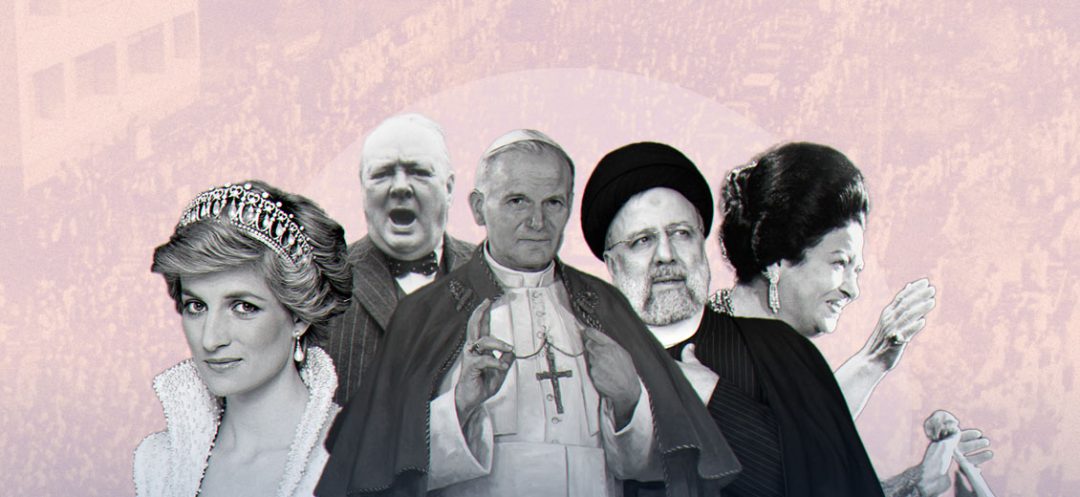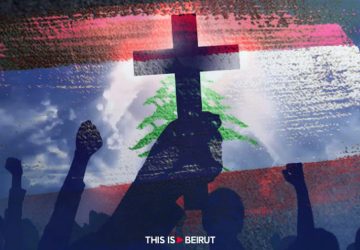Listen to the article
Hezbollah’s Secretary General Hassan Nasrallah praised late President Ebrahim Raisi and his Foreign Affairs Minister Hossein Amir-Abdollahian, highlighting their monumental funeral as one of the largest in modern history. “The funeral procession is the third largest in the history of mankind after Imam Khomeini and Qassem Soleimani,” Nasrallah said in his speech last Friday.
But is it really the case? This statement prompted us to question its validity. In today’s era, with the accessibility of tools like Google and ChatGPT, conducting thorough research is always within reach.
Simply by researching the Guinness World Records Archive, we discovered that the biggest registered funeral in history is the funeral of the charismatic C.N. Annadurai (died on February 3, 1969), Tamil Nadu Chief Minister, which was attended by 15 million people, according to a police estimate. The queue at the grave of the Russian singer and guitarist Vladimir Vysotsky (died on July 28, 1980) stretched for 10 km. The funeral of the Iranian Revolution leader, Imam Khomeini, is estimated to have been attended by millions of mourners. While exact figures vary, some reports suggest that up to 10 million people gathered in Tehran to pay their respects to the revered religious and political figure following his passing in June 1989. The news then was about the size of the emotional crowd that took the coffin from the guards and tore off the white shroud.
Throughout history, humanity has commemorated the passing of leaders, icons and revered figures with grandiose ceremonies, marking their legacies and celebrating their contributions. These funerals serve as poignant reminders of the impact individuals have had on society and the profound mark they left behind.
One of the most iconic funerals in history is that of Queen Victoria of the United Kingdom, whose passing in 1901 marked the end of an era. Her funeral, steeped in Victorian pomp and ceremony, reflected the grandeur of the British Empire at its zenith and the profound impact of her reign on global affairs.
Similarly, the funeral of Mahatma Gandhi in 1948 was a watershed moment in the history of India and the world. Gandhi’s commitment to nonviolence and civil disobedience inspired millions around the globe, and his funeral procession drew mourners from every corner of the earth, united in their grief and admiration for the fallen leader.
In more recent times, the funeral of Nelson Mandela in 2013 captured the imagination of the world and served as a poignant reminder of the power of forgiveness and reconciliation. Mandela’s journey from political prisoner to president embodied the resilience of the human spirit, and his funeral was a celebration of his legacy as a champion of peace and equality.
When the French novelist Victor Hugo died in 1885, more than 2 million people observed the funeral procession from the Arc de Triomphe to the Pantheon, more than the ordinary population of Paris. It was the first celebrity funeral.
While it’s challenging to rank these events in terms of size or significance due to varying cultural, historical and logistical factors, several funerals stand out for their scale, impact and historical importance. Here are some of the biggest funerals in the world that are worth mentioning:
Princess Diana (1997)
The funeral of Diana was held in London on September 6, 1997. The procession drew an estimated 3 million mourners, who lined the streets of London to pay homage to their Princess.
Umm Kulthum (1975)
A crowd reported to be more than 4 million people came out to watch the funeral procession of Egyptian legendary singer Umm Kulthum in Cairo, almost the same amount of people that attended the funeral of Egyptian President Abdul Nasser.
Winston Churchill (1965)
Sir Winston Churchill, the British PM, hero of World War II. His state funeral in London was attended by dignitaries from over 100 countries, making it one of the largest state funerals in history.
Pope John Paul II (2005)
The funeral of Pope John Paul II, held in April 2005, was one of the largest religious gatherings in history. Millions of people from around the world flocked to Vatican City to pay their respects to the beloved pontiff, who served as the head of the Catholic Church for over 26 years. His funeral brought together leaders of various faiths and nations.
Kim Jong-il (2011)
The funeral of Kim Jong-il, the Supreme Leader of North Korea, was a meticulously choreographed event that showcased the regime’s propaganda and military prowess. Kim’s death in December 2011 prompted an outpouring of grief from North Korean citizens, many of whom were compelled to publicly demonstrate their sorrow.
In the end, stating that President Raisi’s funeral ranks as the third largest in human history is factually inaccurate. However, the sentiment behind such a claim is somewhat understandable to a certain extent.





